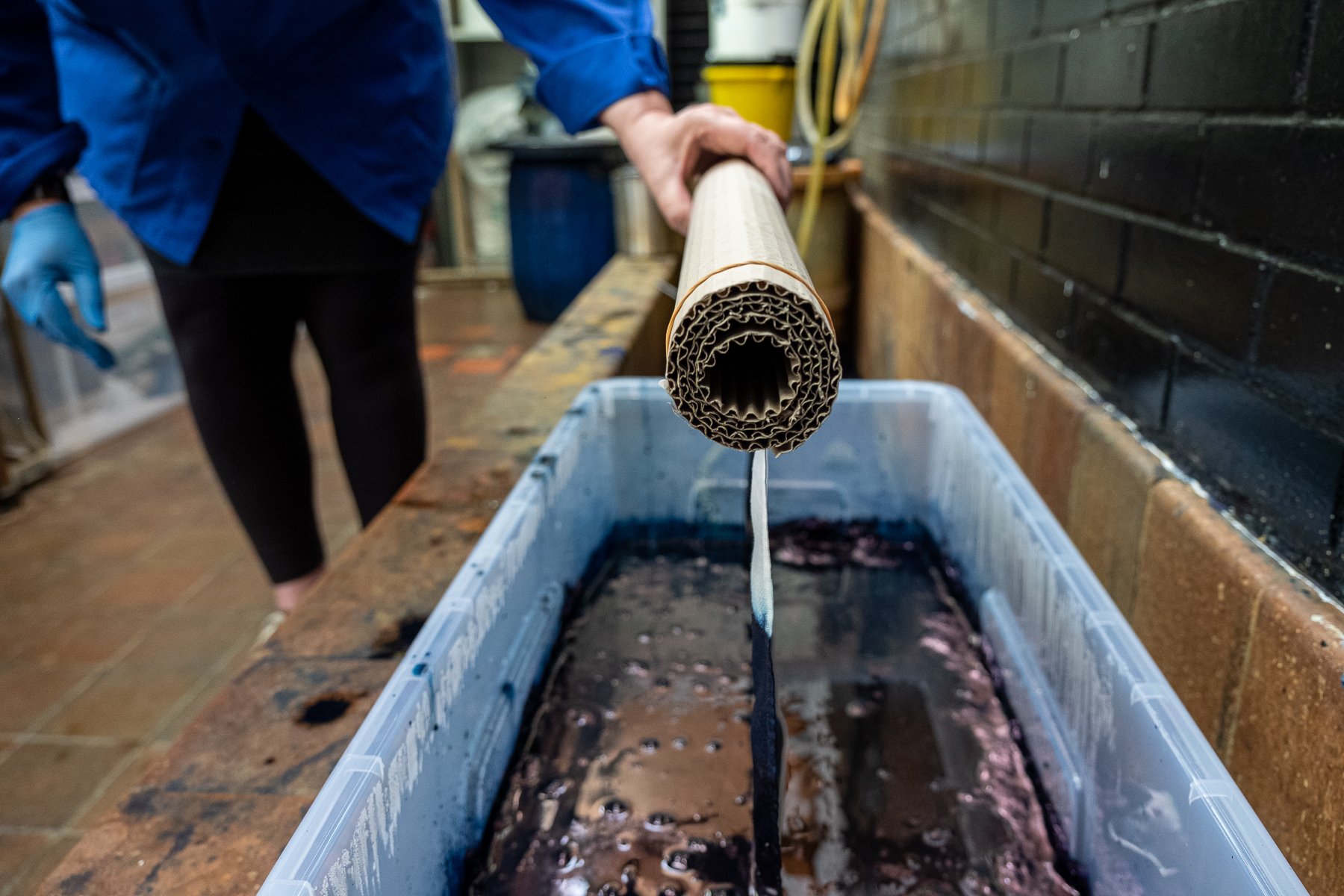Linda : Indigo: A layer in the mix
/Indigo is used worldwide. The dye vat can take many different forms – from deep ceramic vessels to concrete tanks, from enamelled baths to plastic buckets. In her work, Hand Block Printing and Resist Dyeing (1985), Susan Bosence presents a graphic description of indigo dyeing in her workshop.
Image: Susan Bosence (1980s) Sample of calico, pleated and tightly sewn before being dyed in indigo. Indigo on calico. Accession number T.96.21. © Professor Daniel Bosence/Crafts Study Centre 2004.
“Suppose we begin with the plain lengths. Put the long gloves on. Carefully draw the purple scum on the vat surface to one side…Lower the cloth carefully into the vat, avoiding bubbles, and imagine you are swimming underneath the surface…Now, bring the cloth out of the vat…The air acts immediately on the cloth as it comes up and out into the air… And so the time goes by...They will need three or four, even more, immersions… ”
In my work, indigo is rarely a stand-alone process. It is invariably a layer in the mix – sometimes the starting point, and other times a mid-tone or a final intense darkness – testing and determining its effect over synthetic dye and printed discharge.
Indigo is unique. It is a substance that requires observation and judgement as the colour builds. There is constant questioning… ‘How long should I immerse the cloth?’, ‘Shall I stop or dip again?’, ‘How much colour will be left when the residue is washed away?’.
Photographer: Ed Brydon



















